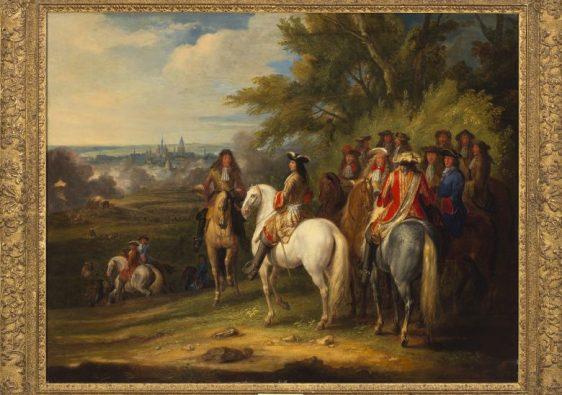The Princessehof Ceramics Museum in Leeuwarden has a few interesting exhibitions this year. At the end of October 2024 the exhibition Wu Zetian, the only female emperor of China is to be expected. But first, from 2 March 2024 to 1 September 2024 the museum shows the exhibition Porcelain Fever: the white gold of Augustus the Strong and Madame de Pompadour.
The richly illustrated bilingual (Dutch and English) catalogue Porseleinkoorts – Het wonderbaarlijke ontstaan van Europees porselein / Porcelain fever – The miraculous origins of European porcelain will be available for sale from Saturday, 2 March 2024 via the webshop and in the museum shop of the Princessehof museum. The curators of the exhibition, Denise Campbell and Laura Smeets, experts from Germany, France and England have written contributions for this publication, which has 240 pages and costs € 29,95.
The exhibition portrays the genesis of European porcelain – a fiercely competitive struggle beset with intrigue, espionage and drama – the exhibition features masterpieces from the world-famous porcelain collections of Dresden and Sèvres, which are travelling to the Netherlands for the first (and perhaps last) time especially for this occasion.
Porcelain animals more than a metre high, a profusion of gold, soft pastel colours, exuberant paintings and openworked objects: in the course of the eighteenth century, nothing was too outlandish and Europe succumbed to a highly contagious porcelain fever. Two royal houses unleashed a craze that very quickly propelled European porcelain art to great heights and even today has left its mark. It is the thrilling story of the birth of European porcelain, told by two iconic figures of this turbulent time: Augustus the Strong (1670-1733), Elector of Saxony, King of Poland and founder of the Meissen porcelain factory in Germany; and Madame de Pompadour (1721-1764), mistress, cultural adviser and confidante of King Louis XV and patron of the Sèvres porcelain factory in France.


The famous alchemist Johann Friedrich Böttger (1682-1719) boasted that he knew how to transmute base metals into gold. Augustus the Strong wanted this secret for himself, and on his orders Böttger was locked up in the palace. He didn’t manage to make gold, but after years of experimenting together with fellow scientists and craftsmen, Böttger succeeded in producing ‘white gold’. They were the first Europeans to identify the correct ingredients to make porcelain. Highly sought-after in Europe, the formula was jealously guarded, so the first porcelain production facilities were not located in a factory, but in a place where no one could enter or leave unseen: the ‘porcelain castle’ Albrechtsberg near Meissen. It is depicted on a cup and saucer recently purchased by the Princessehof and on display in the exhibition. Incidentally, despite strict surveillance, employees at the castle managed to escape with valuable knowledge, with the result that, before long, other porcelain factories were established across Europe.
The Porcelain Fever exhibition takes visitors through six regally designed rooms, where they will encounter the earliest experiment from Italy, Augustus’ frenzied amassing of Asian porcelain and Meissen’s first experiments, as well as a life-size zoo. Visitors not only come face to face with Augustus the Strong and Madame de Pompadour, but also other European monarchs and the porcelain that connected them. The exhibition ends in the splendour of the French court, resplendent with flowers, ornate frames, soft colours and painstaking details. The spatial design of the exhibition is by Tatyana van Walsum; the graphic design by Marline Bakker-Glamcult Studio.


For the exhibition, the Princessehof was able to draw on the abundant ceramic collections of the Porzellansammlung in Dresden, Musée national de Céramique in Sèvres and other important porcelain collections, such as those of the Louvre and Musée des Arts Décoratifs in Paris. This exhibition can only be realised thanks to their generous cooperation: more than 150 objects of unparalleled quality from these museums are showcased. This is exceptional because they are all objects that do not travel often.
On the opening day, Saturday, 2 March 2024, the museum was open for free. There also is a festive programme.
Princessehof National Museum of Ceramics
Grote Kerkstraat 9
8911 DZ Leeuwarden
The Netherlands
The museum is open Tuesday to Sunday from 11am to 5pm.
Website: https://princessehof.nl/




